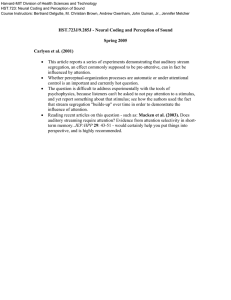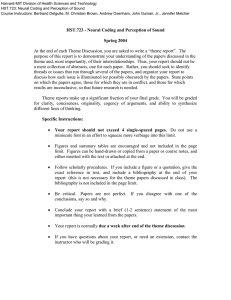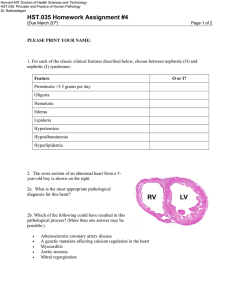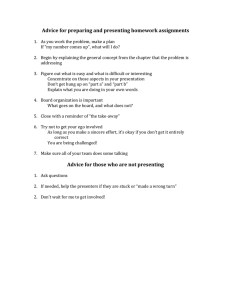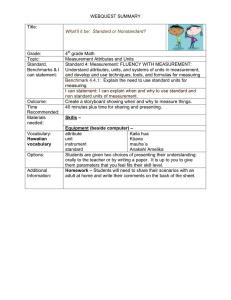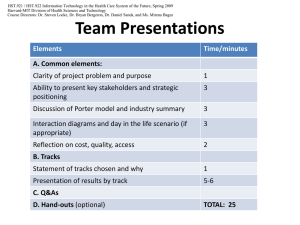Harvard-MIT Division of Health Sciences and Technology
advertisement
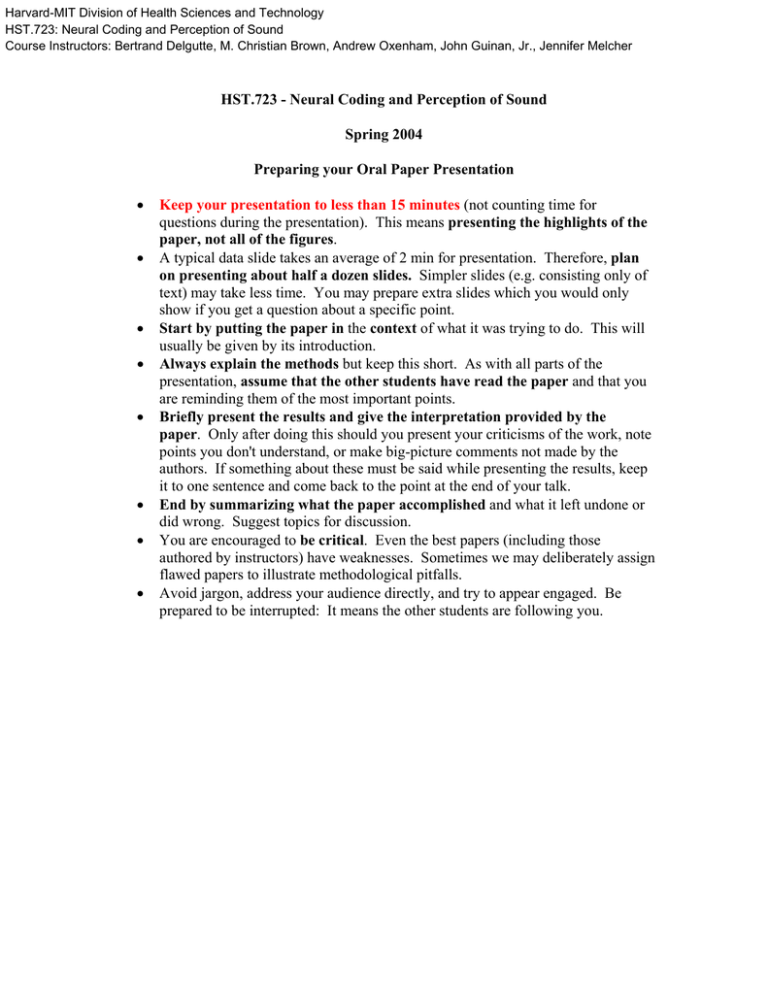
Harvard-MIT Division of Health Sciences and Technology HST.723: Neural Coding and Perception of Sound Course Instructors: Bertrand Delgutte, M. Christian Brown, Andrew Oxenham, John Guinan, Jr., Jennifer Melcher HST.723 - Neural Coding and Perception of Sound Spring 2004 Preparing your Oral Paper Presentation • • • • • • • • Keep your presentation to less than 15 minutes (not counting time for questions during the presentation). This means presenting the highlights of the paper, not all of the figures. A typical data slide takes an average of 2 min for presentation. Therefore, plan on presenting about half a dozen slides. Simpler slides (e.g. consisting only of text) may take less time. You may prepare extra slides which you would only show if you get a question about a specific point. Start by putting the paper in the context of what it was trying to do. This will usually be given by its introduction. Always explain the methods but keep this short. As with all parts of the presentation, assume that the other students have read the paper and that you are reminding them of the most important points. Briefly present the results and give the interpretation provided by the paper. Only after doing this should you present your criticisms of the work, note points you don't understand, or make big-picture comments not made by the authors. If something about these must be said while presenting the results, keep it to one sentence and come back to the point at the end of your talk. End by summarizing what the paper accomplished and what it left undone or did wrong. Suggest topics for discussion. You are encouraged to be critical. Even the best papers (including those authored by instructors) have weaknesses. Sometimes we may deliberately assign flawed papers to illustrate methodological pitfalls. Avoid jargon, address your audience directly, and try to appear engaged. Be prepared to be interrupted: It means the other students are following you.
